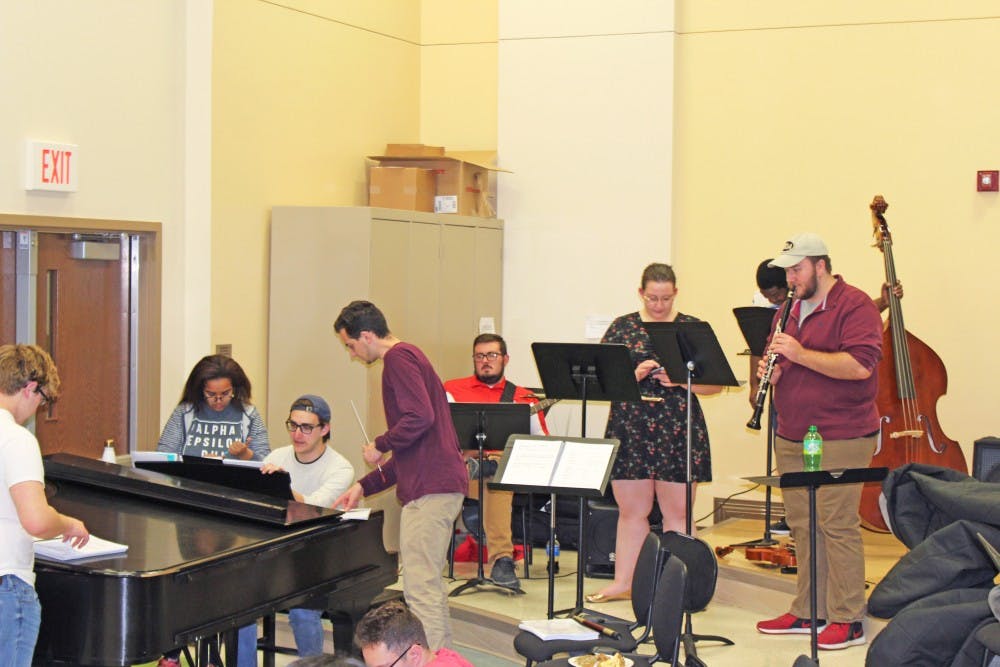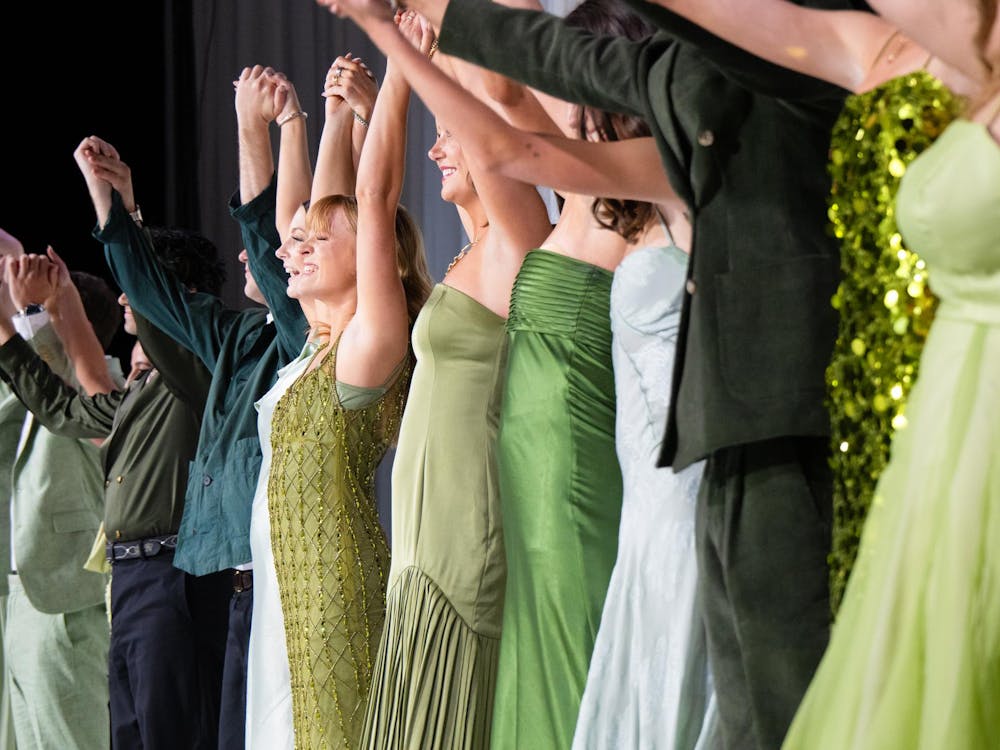Annika M. Baldwin
Andrew Higgins and Colin Shimrock agree that "Hopeless Romantic" never feels hopeless, joking about the various obstacles in production. Higgins, a fifth year, and Shimrock, a senior, are co-collaborators of the musical.
Higgins' musical, "Hopeless Romantic," touches upon mental health, interpersonal violence and issues of identity. It tells the story of 20-year-old Henry, a boy battling schizophrenia, struggling to express this mental illness and trying to find an intimate partner who understands him. He slowly begins to fall apart, listening to anyone he hears, and the line between reality and fantasy becomes blurred.
"What's real at this point?" Shimrock proposes.
Higgins started composing "Hopeless Romantic" three years ago. The journey began with a couple of songs, made simply for a one-act or to be performed for musical recitals. About a year later, Higgins began writing the full script.
Dynamic and distinct characters surround Henry in his journey. There are three different love interests: Aniline, Cassi and Tracey -- characters without mental illnesses experiencing someone with one. People can identify with and relate to the love interests and the antagonist, Owen, because of their emotions, realism and charisma. Besides Henry's voices, no character is objectively good or evil; the line is blurred, which is representative of real life and humans.
"I'm combining my facets of musical theatre and psych," said Higgins. "I wanted to write a musical that can accurately portray mental illness because I feel like musicals that claim to portray it do it in a superficial way."
A character at the end of the play exclaims, "He had schizophrenia? He didn't look crazy." Higgins wanted a play that didn't showcase mental illness as "being crazy."
The inspiration for "Hopeless Romantic" came from situations that Higgins was either exposed to or experienced personally. He volunteered in different health institutions, listening to patients and trying to understand. He discovered that many hide their illness, wondering who will believe them, and incorporated this in Henry's character.
Meanwhile, Shimrock took Higgins' work and used his own vision, inspired by German expressionism, to represent schizophrenia in the context of reality. He developed visual representations of internal concepts, such as thoughts, through lights, music and blocking, allowing Henry's emotions to be visibly released.
Producing this show involved a great deal of trust. Higgins trusted Shimrock to interpret his work for the stage, and the directors put a lot of faith into their talented cast and crew.
"This," Shimrock told the cast and crew, "is an opportunity to showcase your skills and do something you love--there's no pay and no credits."
Enjoy what you're reading?
Signup for our newsletter
This is the original cast for the performance; no one has ever come before them. Despite the responsibility and stressful schedules, everyone saw "Hopeless Romantic" as worth it, and this surely made all the difference.
For Higgins, having his hard work and dedication become a reality is "a surreal and humbling experience.
"This is my baby in a lot of ways," said Higgins."When the lead accepted his role, my head was actually in the curtain."
"Hopeless Romantic" will be showing at 6 p.m. on Thursday, Nov. 29, at 2 p.m. 7:30 p.m. on Saturday, Dec. 1 and at 2 p.m. on Sunday, Dec. 2 in Wilks Theater in the Armstrong Student Center.
baldwaim@miamioh.edu




